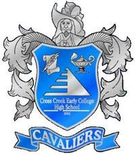|
Recently, I read a book on collaborative learning at the college level. It was interesting to see how much time the authors spent trying to convince professors of the value of students working in teams. In fact, an entire chapter was devoted to the debate between the verbiage "cooperative learning" versus "collaborative learning" with the overall conclusion being the words do have different meanings in the deepest sense, but not to the degree of dismissing the practice. Oh academia!
Nonetheless, the book, Collaborative Learning Techniques: A Handbook for College Faculty is a keeper! First, the book convinces faculty members that using collaboration techniques in both onsite and online classes add value. Second, it asks critical reflection questions so that the methods and strategies are employed with fidelity. Finally, it provides research-proven methods of collaboration to educators, many of which high school teachers have been using for years (ex. Think-Pair-Share). Integrating collaborative learning situations in classes with more regularity should be a goal within the early college structure. Looking at rationale and considering various subjects and perspectives, the authors provide a clear path to justify the use of collaboration within the classroom:
Creating a learning environment when elements listed above are present is optimum, but keep in mind things like "deep" versus "surface" learning and how social interaction can be both a blessing and curse. The final word of caution from the authors and one that should be repeated is that creating collaborative experiences for the mere sake of checking the block is counter-productive. Using collaboration techniques/protocols should compliment the learning environment, not necessarily dominate it. The more intentional use of collaboration within the classroom should yield benefits beyond just a division of work; indeed, it should enhance and improve learning through the items listed above. Adapted from Collaborative Learning Techniques: A Handbook for College Faculty Claire Howell Major, Elizabeth F. Barkley, and K. Patricia Cross, 2005 Blog Instructions Read the above introduction and from your experiences, answer the following question: What are the keys to effective student collaborative learning? Be subject specific in your response (through the lens of your particular subject such as math, social studies, language, AVID, science, etc) Shields-Nicdao-White will all answer individually and respond/comment to one other Merritt-Matkins-Patrick will all answer individually and respond/comment to one other Howard-Webb will both answer individually and respond/comment to each other Rivera-Rappold will both answer individually and respond/comment to each other McGinnis-Hasapis-Hosking will all answer individually and respond/comment to one other Huffman-Thetford-Hickle will all answer individually and respond/comment to one other Click on the blue "comments" to answer and respond. This assignment is due by Dec. 3, response and comments by Dec. 7. If you have any questions, please send me a note via my edumentality email. I am having technical difficulties on my Gmail account. [email protected]
44 Comments
|
|

